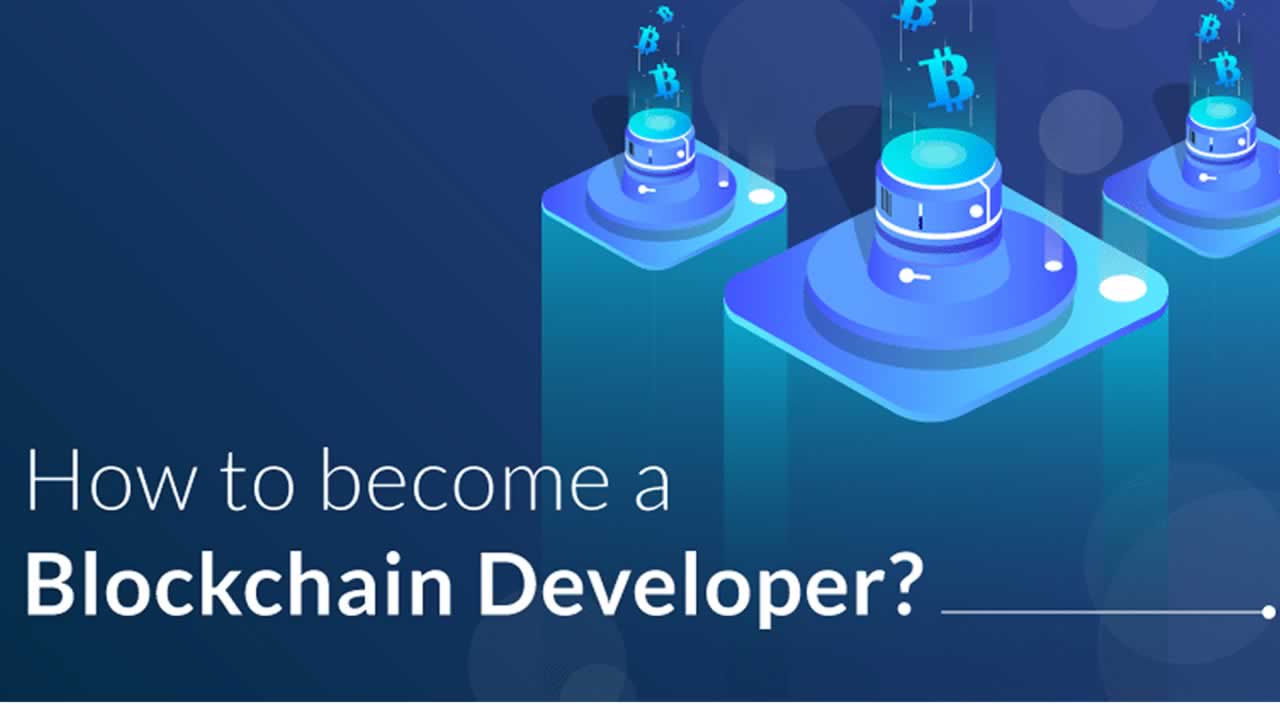6 Steps to Become a Blockchain Developer
This article is for professional software developers interested in steering their careers towards blockchain.
Are you interested in blockchain development but don’t know where to start? Here are my steps to becoming a blockchain developer in 2020 and beyond.
Step 1. Assess Your Skill Set
As a software developer,you’ll likely have your preferred stack. You might have worked with a few different technologies, but you’re currently working on a small range of tech. If this is the case, great! You’re already in good stead.
Full-stack development experience is a huge advantage but not critical at this point. It could be that you’ve focussed solely on the back end but haven’t touched web design. Your main job could be creating React components, but you get skittish when someone mentions microservices.
The most important thing is that you know where your strengths and weaknesses lie in a full stack. For me, my back-end skills (and interests) outweighed my propensity for using front-end frameworks.
Step 2. Target the Required Skill Set
Now that you know where your strengths and weaknesses lie, it’s time to target what you need to learn next.
Ethereum is the best entry point into blockchain development. It has the second-highest market cap of any cryptocurrency, and it’s has held that position for the majority of its lifetime, (XRP overtook for a short time during the 2017 boom), meaning it’s a very popular project. Ethereum has a large developer community, so most issues can be solved with a quick Google search and the Ethereum Foundation provides great documentation.
First on your list of things to learn is the Ethereum smart contract language: Solidity. This is the backbone of any decentralised application on the Ethereum network.
Next up is Node and React, very popular for front-end development and the tools of choice for most DApp creators. (Bonus points for Redux, too).
The Truffle Suite is an important tool that helps combine your Solidity code with your front end. Using Solidity, Node, web3js , and React, you can create, test, and deploy DApps from the Truffle suite.
Step 3. Learn
There are some great YouTube channels producing good quality blockchain development content. I learned a lot from a creator called DappUniversity when I first started. Gregory focuses mainly on smart contract and DApp development.
The Blockgeeks YouTube channel is another great resource. I also highly recommend signing up for the Blockgeeks Platform. They provide courses and learning resources for the blockchain industry, from development to trading and more. The Pro-Elite subscription I use costs $73 USD per year, a very small price to pay for the wealth of industry-leading resources, in my opinion.
Documentation and tutorials are your best friends.
Step 4. Create
Start making things. Push your code to Github and make your projects publicly visible. You can use Heroku or Github Pages for your front end. Deploying smart contracts to Ethereum test networks is free!
I developed and deployed a decentralised exchange on the Kovan test network that I made available on Github pages for free hosting. The more you create, the more you’ll learn, and the more you’ll have in your portfolio to show off to interested parties.
Creating is the most effective way of showing that you can develop for the blockchain.
Write about your experience. Write about what you learned. Write about the conclusions you made. Maybe you’ve made good habits that you think might benefit other developers.
Step 5. Apply
So, you’ve got an online presence in the form of a portfolio. Time to update your CV to focus on blockchain and apply for some jobs.
Fortunately, the industry is forward-thinking and remote culture is very common, so it’s likely most roles will be at least partially remote. This is great because unless you’re in a tech hub like Silicon Valley, it’s unlikely your local area will be abundant with blockchain jobs. Be prepared to look further afield.
If you’ve been in software for a few years, you’ll know that updating your LinkedIn profile to “Open to Opportunities” prompts a barrage of recruiters with PHP, .NET, Java, or __ jobs available. You’ll likely still get that, but looking for blockchain jobs specifically will require more hunting on your part than usual.
Blocktribe is a blockchain-specific ad board, so keep an eye on newly posted jobs there daily. Other than that, Stack Overflow, LinkedIn, Indeed, and Angel List are worth checking often.
Meet with people. Find your nearest blockchain hub and just go there, introduce yourself as a developer, and give as many people your details as possible (business cards help). It’s all about people. Even if you don’t run into anyone looking for developers right there and then, it’s very likely they’ll come across people who are. Give your details to as many people interested in blockchain as you can. This is the equivalent of spreading your net wide and getting your name out there.
Step 6. Repeat
If you’ve managed to get a job after one walk through these steps, wow! Congratulations, you’re a superstar.
Whether you have or not, the next step is to go back to step 1 and repeat. The blockchain space is advancing at breakneck speed. Continual learning is paramount and exciting. Keeping up to date with the latest trends in blockchain development means you are one of the first few people in the world to obtain that knowledge. How cool is that!?
Repeating steps 1 to 6 will help you grow into a source of valuable knowledge in blockchain development.
Conclusion
- Assess Your Skill Set
- Target the Required Skill Set
- Learn
- Create
- Apply
- Repeat
Bonus step: Enjoy yourself!
Thank you for reading!
#blockchain #bitcoin #programming
